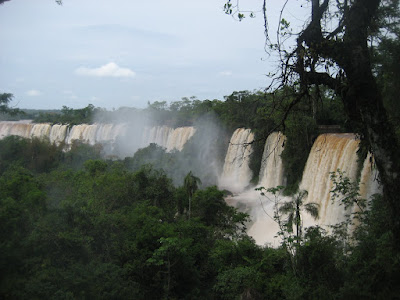




Well, we were scheduled to arrive in Auckland at 4 am on Thursday 6th but a delay in our departure from Santiago meant we arrived a couple of hours later. It’s a hell of a flight and the LAN Chile plane, although comfortable enough, was an old style one. We were very pleased to see our friend,Pauline, arrive as promised at the airport and she, having taken a couple of days off work, took us home to their lovely place in the Auckland countryside where we relaxed for the day and had a little snooze so we could be alert (or almost) when Neil arrived home that evening. It was good to have a relaxing evening with old friends and in a real home for a change. A series of 3 star hotels in Europe and 5 star accommodations in South America, no matter how comfortable or luxurious, pales after some time and hotel buffet breakfasts, even in the best of hotels, are never hot. So we really enjoyed our evening eating Pauline’s good cooking and sampling a few NZ Sauvignons Blancs
Neil and Pauline took us for a long exploration of the Coramandel peninsula near Auckland so we got an idea of how life progresses in that quiet part of the world. The next day, we set off in their 4 wheel drive for the wilds of the North Island (Northland). We tried to deviate into a bit of sightseeing en route but realized that time was running out so drove directly to Paihia, our timeshare destination.
It was quite comfortable and gave us a good base for exploring the northern parts of NZ. It’s where the country was first settled and where Capt Cook landed so we were able to visit a few historical sites and get a better handle on the early relationship between the white settlers and the Maoris. It was a bit difficult to filter through the political correctness but we could see that in the early days, the power lay fairly firmly with the Maori tribes and chieftains. Apart from whalers and soldiers who first established ownership of Russell, now an idyllic port but, in earlier times, a “hell hole” of vice and corruption, the main early settlers were Christians of one brand or another who sought to convert the natives and produce translations into the hitherto oral language of the Maori. Maoris, unlike Australian aborigines, could see the benefit of trade with the white community and did their best to accomplish this. One of their most favoured purchases was the muskets that became increasing available in the world after the end of the Napoleonic wars. For Christian preachers, it was a struggle to finds a balance between facilitating this purchase and teaching Christian values. We visited 3 National trust sites (all mission sites of one sort of another) and the site of the signing of the Waitangi Treaty.
Paihia is a pretty place although the grey skies of our first few days didn’t do it justice. Still we were luck y to have the four wheel drive and in it we travelled north to the bottom of the 90 mile beach that extends to the far north of the island. We also had a relaxing day on a catamaran, and were lucky to see some otters. Having explored the area thoroughly, we left a day early and drove down the very quiet west coast before returning to Neil and Pauline’s where it felt like coming home. Saturday saw us experiencing the sights of Auckland and taking an afternoon walk to the dam near their lovely country house. In the evening we went to a great restaurant with them and with Neil’s sister Brenda whom we had met in France some years ago, and his brother and sister –in-law, Hugh and Jenese.
It was a happy visit but too short and we sadly said goodbye until next year when we will be reunited in France. On Sunday, we finally took wing for Sydney. Living out of a suitcase had become second nature to me so the idea of living in our own house seemed a trifle odd. But there were those whom I hadn’t seen for a long time and it was meeting them again that I really was looking forward to.
When we touched down in Sydney, we emerged from the airport to the welcoming arms of Katie. We were home.
















































